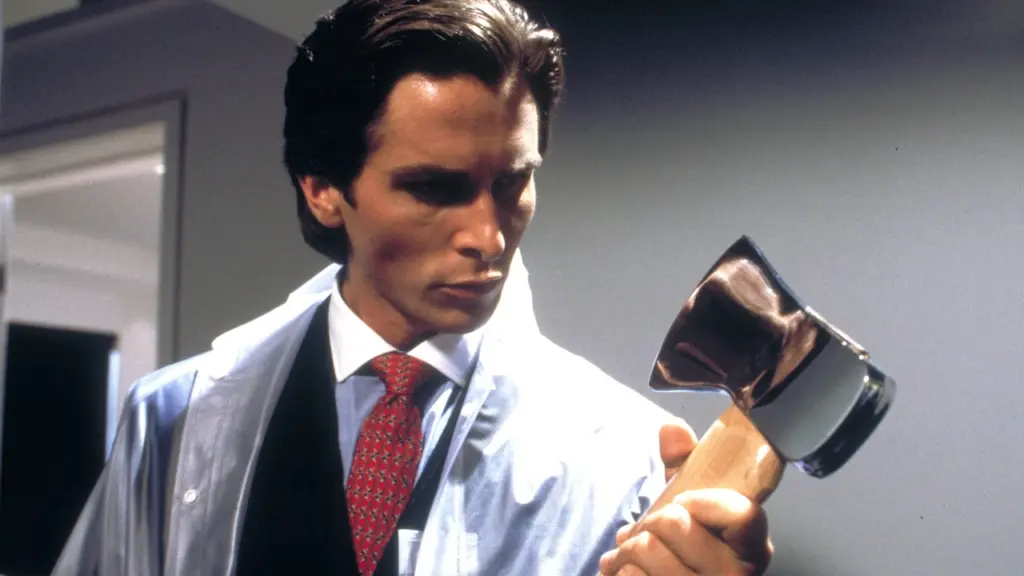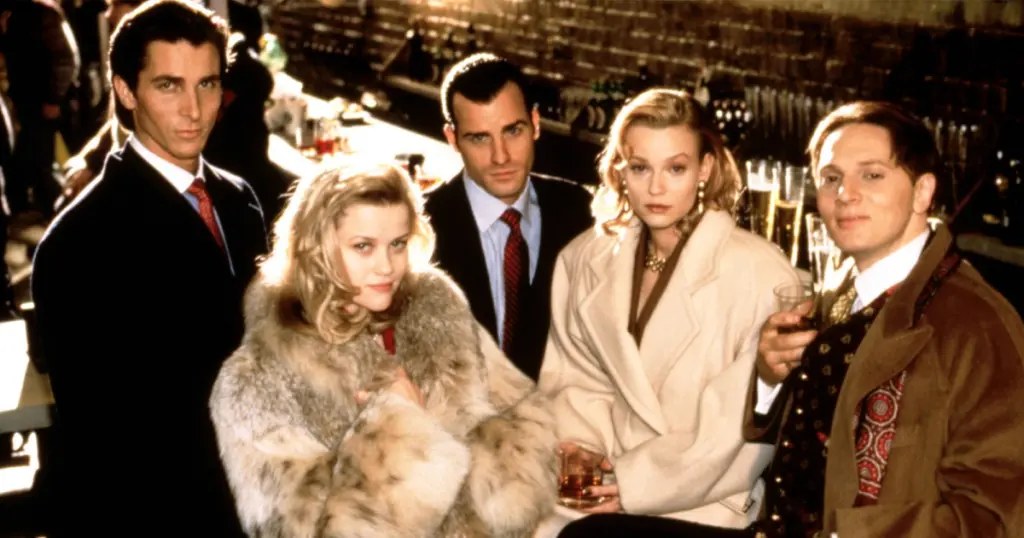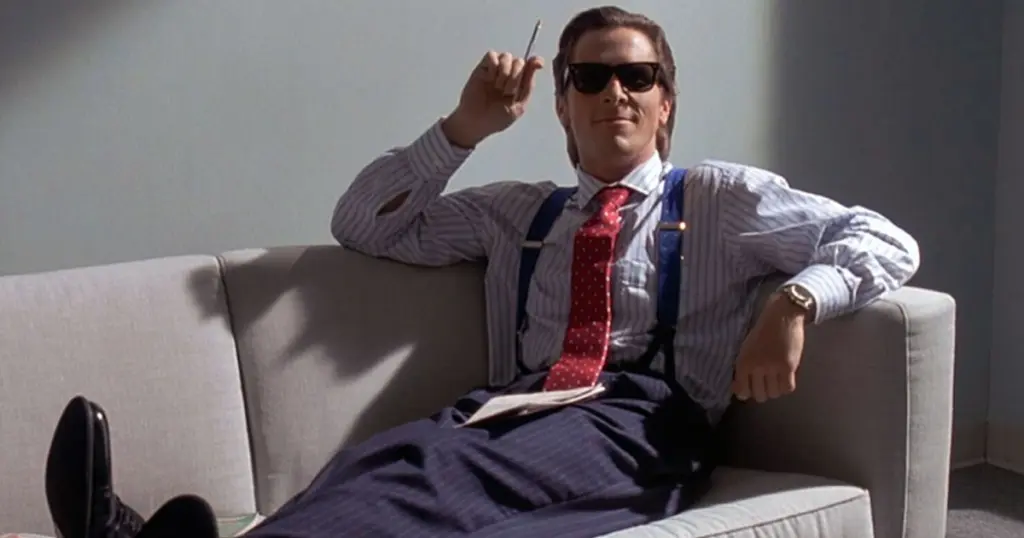Entertainment - Media News Watch originally published at Entertainment - Media News Watch
The American Psycho episode of WTF Happened to This Adaptation? was Written and Narrated by Andrew Hatfield, Edited by Mike Conway, Produced by Lance Vlcek and John Fallon, and Executive Produced by Berge Garabedian. Here is the text of Hatfield’s script:
Horror can take many forms and its high time we talked about something firmly in the psychological realm. The author Brett Easton Ellis is well known for tackling uncomfortable or even horrifying topics, but his third book was a departure from the norm. It tackled a more traditional topic in an entirely nontraditional manner. American Psycho was quite controversial upon its release in 1991 and the film based on it in 2000 (watch it HERE) was divisive then and it’s divisive now.
Take a look at the craftsmanship on that card as we find out what the f*ck happened to this adaptation.
The Movie
American Psycho is the 2000 adaptation of the novel of the same name from 1991 written by Brett Easton Ellis. The MovieAmerican Psycho is the 2000 adaptation of the 1991 novel of the same name written by Brett Easton Ellis. The novel was written by Mary Harron, Guinevere Turner and directed by Harron. Mary Harron was a TV director with episodes of Oz, Homicide : Life on the Streets as well as the independent movie I shot Andy Warhol featuring Lily Taylor and Jared Harris. She would mostly return to TV after this film but did direct the minor success The notorious Bettie page. Turner has a more impressive acting resume than anything else but would go on to write some bigger projects like re-teaming with Harron for The Notorious Bettie Page and, hilariously,
Bloodrayne which was adapted from the video game and directed by Uwe Boll.The cast is an incredible collection of talent with Christian Bale in the title role of Patrick Bateman. Bale had already been a child actor with big roles in Empire of the Sun and Newsies but also had grown into himself as an actor with roles in Velvet Goldmine and
Portrait of a Lady
. All of this was before he won an Oscar and became Batman. Leonardo DiCaprio had to be talked out of this role, and I think it was for the best. I love Leo but this performance by Bale makes the movie. The supporting cast includes Reese Witherspoon and Jared Leto. Justin Theroux is also in the film. Cloe Sevigny is also there. The rights to the film were purchased in 1992, just one year after the publication of the book. Stuart Gordon, David Cronenberg and David Weiss were all considered as directors. The two who made the movie began writing it in 1996.
Oliver Stone briefly overtook the project but was fired after creative differences. The film still contains some of Stone’s decisions, but the script and tone have been kept after Harron returned. The majority of the filming was done in Toronto, with some shots being shot in New York. The cinemetographer and Harron often argued, and it is a miracle that the film was made in the way Harron wanted. The film was shot over 7 weeks, and it made 34 million dollars on a budget of 7 million dollars. The movie was a financial disaster, despite the ratio sounding good. The movie divided critics. Some, like Peter Travers and Roger Ebert, loved it and saw its value while others thought it was a violent mess. Lionsgate spent a lot of money on marketing the film, including a fake stock exchange game and the ability to read emails sent between characters. Brett Easton Ellis’ third book, American Psycho, is a cult classic. His first book, Less than Zero was published at the age of 21. It was made into a movie with a young Robert Downey Jr. He has eight novels, with two more in production to be adapted for the big screen or small. He has also written scripts for movies not based on his works, such as The Canyons and Smiley Face Killers. However, none of these movies have had the same impact or legs of AmericanPsycho, even 20 years later.Ellis believed that the book was going to be the end of her career because of the graphic violence. It is a mix of dull banality and sudden or extended horror, which can be difficult for the brain. It was banned or censored in some parts of the globe and received a mixed reception when it was released. It has a tragic air to it, as it was involved in several real-life terrors. It was found in the possession of Wade Frankum who committed the Strathfield Massacre, and Karla Homolka, half of the Ken & Barbie killers’ duo. It was also said that it inspired the emails exchanged in the Duke Lacrosse scandal of 2006, which were allegedly modeled after what Patrick Bateman might say. What is the same?Both the book and movie follow an almost identical chain of events. Patrick Bateman, a Wall Street investment banker from the late 1980s, is shallow, obsessed with status and wealth, and a serial murderer. He follows a strict regimen to keep himself in shape and hangs out his group of equally horrible, but non-murderous, friends. They comment on the looks, clothes, and lifestyles of others while being engulfed in sex and drugs. Bateman kills a coworker named Paul Owen who he despises for multiple reasons and spirals with further murderous rampages.Bateman has a fiance who he hates and constantly cheats on. A police detective interrogates him, but doesn’t suspect much beyond the coincidence that they worked together. Bateman’s explanation is accepted and he does not get in trouble or be suspected of Paul’s murder. Paul could still be alive as he was supposedly seen by several people in London. Bateman loses his grip on reality and continues to kill people, including two women he had known before. He is chased and he gets into a full-blown shooting, but he is not arrested or accused. He then calls his attorney to confess all the crimes he committed over the answering machine, before returning home. He begins to freak out and wonders what reality is, as nobody believes him about the crimes he committed and there are no repercussions. He returns to his lifestyle, which includes sex, drugs and excess, and will likely kill again if he has ever killed. The majority of characters names are also the same, including Patrick, Paul Evelyn, Detective Kimball and his secretary Jean. The names of his almost as terrible friends are the same in both books and films, and nearly all scenes exist in both. Even if the timelines and order of events and conversations have been rearranged and slightly altered, there is a similarity between them. Characters are often confused with other characters, or things are misheard or misinterpreted. This gives everything a sense of confusion. Even though the details of hallucinations or actions are different, the tone is nearly identical. Both endings are the same, as Patrick is allowed continue his murderous ways and hedonistic lifestyle. You’re not sure if Patrick is a reliable witness or if these atrocities were committed by him. However…What Changed?Well even though many things play out the same, the movie seems to be more in the camp of everything happening in the head of Patrick even if the filmmakers believe he is a serial killer. The book has a scene the movie does not, where a taxi driver recognizes Patrick based on a first-person account from another cabbie that he assaulted as well as an actual wanted poster. The book ends with Bateman being less sorrowful than he is in the film and more existential, like he may be trapped in his own personal hell. The book ends a little differently, with Bateman less sad than he is in film and more existential. It’s like he might be trapped in hell. The movie is a fast-paced hour and 41 minutes. There’s very little downtime. Even when Patrick discusses everyday things, like his self care routine or music in a brisk manner that flows with the scene. When he describes the people or their clothing, it is within the context of the scenes we are watching. It’s a rapid-fire interchange, almost like Howard Hawkes comedies from the 30s and 1940s. He goes on for pages and pages about his routine, while the book takes multiple chapters to discuss entire artists and their albums. He talks for pages about his routine, and the book has multiple chapters that discuss entire artists and albums. These boring breakdowns make the explosive, often long-drawn-out acts of extreme violent even more shocking. The book is more graphic and horrific than the movie, but it’s hard to imagine how that could be portrayed on film. There are some things that would be impossible to film and I won’t mention them because you’d think that your sound output is broken. One of the most memorable scenes in the film is when the ATM tells Patrick that he should feed it a kitten while he holds the gun to its face. In the book, he witnesses a Cheerio interview on TV and microwaves a Jellyfish amongst other absurd events. Like most books, its able to paint a bigger, and often more terrifying picture in its near 400 pages than the movie can.
Legacy

Both pieces are culturally relevant and beloved, but I’ll be honest, the movie is more frequently watchable than the book is readable. It took me a long time to realize that the movie affected me more as a teenager than any other film in my life. It was more disturbing than frightening, and it really turned me off horror for several months, which I find unimaginable now. It’s written, shot and produced in a way that is so close to the book, that if you have seen the movie you’ve probably read it. Below are a few of the previous episodes from
WTF happened to This Adaptation
. To see the other shows we have to offer, head over to the JoBlo Horror Originals YouTube channel – and subscribe while you’re there!

Entertainment - Media News Watch originally published at Entertainment - Media News Watch



